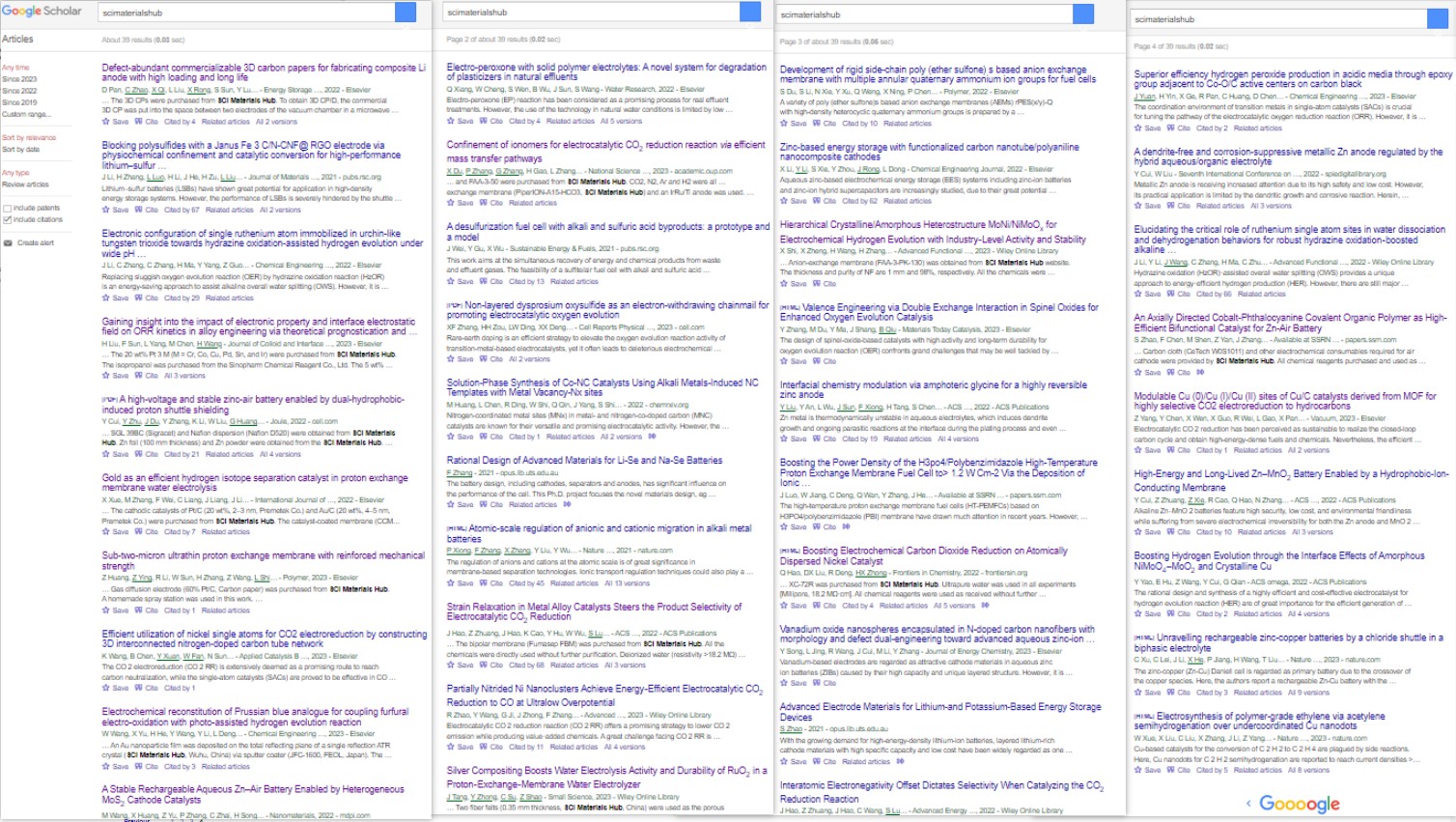
DiffuLayer™ A Series Hydrophilic PVDF membrane filters are developed from hydrophobic PVDF membranes through advanced hydrophilic modification. This process significantly reduces the contact angle, greatly improving wettability and water flow rates. With extremely low protein binding, broad chemical compatibility, and high filtration efficiency, these membranes are widely used in culture media preparation, protein solution clarification, and various biological sample treatments.
Excellent chemical compatibility: Stable with most organic solvents (aliphatic hydrocarbons, aromatic hydrocarbons, alcohols, aldehydes, etc.), with minimal extractables.
Ultra-low protein binding: Significantly lower than MCE, Nylon, and PTFE membranes, ensuring minimal sample loss.
High filtration rate: Hydrophilic modification enables rapid filtration of aqueous solutions with lower pressure requirements.
Outstanding thermal and oxidative resistance: High mechanical strength, suitable for demanding conditions without rupture.
Multiple sterilization methods: Compatible with autoclaving, ethylene oxide, and gamma irradiation.
Batch-to-batch consistency: Reliable and reproducible performance for critical experiments.
Clarification and sterile filtration of culture media and protein solutions
Sterile filtration of antibiotics, ethanol, and other liquids
Biological sample preparation (e.g., receptor binding assays, TCA precipitation)
Solvent filtration and HPLC sample preparation
Removal of particulates and microbial contaminants from aqueous solutions
Enhanced hydrophilicity with reduced contact angle
Rapid aqueous solution filtration, lowering differential pressure
Extremely low protein loss, ideal for bioanalysis and bioproduction
Long service life with excellent weather and aging resistance
| Membrane Type | Hydrophilic / Hydrophobic | Protein Binding | Chemical Compatibility | Thermal Resistance | Typical Applications |
|---|---|---|---|---|---|
| PES (Polyethersulfone) | Hydrophilic | Very low | pH 1–14, moderate solvent resistance | ≤ 60 ℃ | Media, buffers, protein filtration |
| PVDF (Polyvinylidene Fluoride) | Hydrophilic / Hydrophobic | Low | pH 1–8, acid and aqueous stability | ≤ 90 ℃ | Protein solutions, bioproducts, sterilizing filtration |
| MCE (Mixed Cellulose Esters) | Hydrophilic | High | pH 4–8, poor resistance | ≤ 45 ℃ | Aqueous samples, microbial testing |
| Nylon | Hydrophilic | Medium | pH 3–10, resistant to most solvents | ≤ 75 ℃ | Organic solvents, general sterile filtration |
| PTFE | Hydrophobic (can be modified hydrophilic) | Very low | pH 1–14, resistant to strong acids/bases/solvents | ≤ 120 ℃ | Aggressive solvents, gas filtration |
| Feature | A Series (Hydrophobic PVDF) | A Series (Hydrophilic Modified PVDF) | F Series (Hydrophilic PVDF) |
|---|---|---|---|
| Surface Property | Naturally hydrophobic | Hydrophobic PVDF with hydrophilic modification (reduced contact angle) | Naturally hydrophilic PVDF |
| Protein Binding | Low | Ultra-low (better than MCE, Nylon, PTFE) | Ultra-low (ideal for proteins and bioproducts) |
| Chemical Compatibility | Resistant to acids, organic & mixed solvents; not strong alkali | Excellent compatibility with most solvents and acids, minimal extractables | pH 1–8; suitable for buffers and aqueous solutions; not resistant to strong solvents (acetone, DMSO, THF, DMF, dioxane, chloroform) |
| Thermal Resistance | ≤ 90 ℃, oxidative resistant | ≤ 121 ℃; compatible with autoclaving, gamma, EtO sterilization | ≤ 90 ℃ |
| Filtration Flow Rate | Requires pre-wetting for aqueous solutions | High flow; hydrophilic modification greatly improves aqueous filtration | Good flow rate; ready-to-use for aqueous filtration |
| Pre-wetting Required | Yes (alcohol or wetting agent) | No | No |
| Typical Applications | Solvent filtration, sterile filtration, venting, bioprocessing | Media & protein filtration, antibiotics, HPLC sample prep, biological assays | Protein solutions, bioproducts, buffer & media filtration |
| Suitable Samples | Organic solvents, acidic liquids, gases | Aqueous solutions + organic solvents + biological samples (all-rounder) | Aqueous solutions, bioproducts, buffers (focused on bio use) |
| Available Pore Sizes | 0.1, 0.22, 0.3, 0.45, 1.0 μm | 0.1, 0.22, 0.45, 1.0 μm | 0.1, 0.22, 0.45, 1.0 μm |
📌 Summary
Hydrophobic A Series → Best for organic solvents, gases, acidic liquids
Hydrophilic Modified A Series → Most versatile; suitable for aqueous, organic, and biological samples; withstands sterilization
F Series Hydrophilic PVDF → Tailored for biological solutions and aqueous media, especially proteins and culture media
📧 Email: contact@scimaterials.cn
📞 WhatsApp & Tel: +86 153-7569-8751
🔗 Place quick orders on our eBay / Amazon / Alibaba stores.
🌐 We ship worldwide via DHL, FedEx, UPS, SF-Express, or other requested carriers.
📦 Bulk quantities with discount available upon request.
💳 Payment methods accepted: Bank Wire Transfer, PayPal, Credit Card (via Taobao), Alipay, WeChat Pay
📑 DiffuLayer™ A Series Hydrophilic PVDF Membrane Filters – Price List (USD)
| Filter Diameter | Packing Quantity | Price (USD/Box) |
|---|---|---|
| 13 mm | 100 pcs/box | $24 |
| 25 mm | 100 pcs/box | $24 |
| 47 mm | 50 pcs/box | $24 |
| 50 mm | 50 pcs/box | $24 |
| 60 mm | 100 pcs/box | $62 |
| 80 mm | 50 pcs/box | $70 |
| 90 mm | 50 pcs/box | $80 |
| 100 mm | 50 pcs/box | $90 |
| 125 mm | 50 pcs/box | $100 |
| 150 mm | 50 pcs/box | $110 |
📑 PVDF Hydrophilic Membrane Pore Size & Product Codes
| Pore Size (µm) | Product Code |
|---|---|
| 0.1 | PVDF-HA0.1 |
| 0.15 | PVDF-HA0.15 |
| 0.22 | PVDF-HA0.22 |
| 0.3 | PVDF-HA0.3 |
| 0.45 | PVDF-HA0.45 |
| 0.65 | PVDF-HA0.65 |
| 0.8 | PVDF-HA0.8 |
| 1.0 | PVDF-HA1 |
| 1.2 | PVDF-HA1.2 |
| 1.6 | PVDF-HA1.6 |
| 2.0 | PVDF-HA2 |
| 3.0 | PVDF-HA3 |
| 5.0 | PVDF-HA5 |
Partial references citing our materials (from Google Scholar)

Carbon Dioxide Reduction
1. ACS Nano Strain Relaxation in Metal Alloy Catalysts Steers the Product Selectivity of Electrocatalytic CO2 Reduction
The bipolar membrane (Fumasep FBM) in this paper was purchased from SCI Materials Hub, which was used in rechargeable Zn-CO2 battery tests. The authors reported a strain relaxation strategy to determine lattice strains in bimetal MNi alloys (M = Pd, Ag, and Au) and realized an outstanding CO2-to-CO Faradaic efficiency of 96.6% with outstanding activity and durability toward a Zn-CO2 battery.
2. Front. Chem. Boosting Electrochemical Carbon Dioxide Reduction on Atomically Dispersed Nickel Catalyst
In this paper, Vulcan XC-72R was purchased from SCI Materials Hub. Vulcan XC 72R carbon is the most common catalyst support used in the anode and cathode electrodes of Polymer Electrolyte Membrane Fuel Cells (PEMFC), Direct Methanol Fuel Cells (DMFC), Alkaline Fuel Cells (AFC), Microbial Fuel Cells (MFC), Phosphoric Acid Fuel Cells (PAFC), and many more!
3. Adv. Mater. Partially Nitrided Ni Nanoclusters Achieve Energy-Efficient Electrocatalytic CO2 Reduction to CO at Ultralow Overpotential
An AEM membrane (Sustainion X37-50 Grade RT, purchased from SCI Materials Hub) was activated in 1 M KOH for 24 h, washed with ultra-purity water prior to use.
4. Adv. Funct. Mater. Nanoconfined Molecular Catalysts in Integrated Gas Diffusion Electrodes for High-Current-Density CO2 Electroreduction
In this paper (Supporting Information), an anion exchanged membrane (Fumasep FAB-PK-130 obtained from SCI Materials Hub (www.scimaterials.cn)) was used to separate the catholyte and anolyte chambers.
SCI Materials Hub: we also recommend our Fumasep FAB-PK-75 for the use in a flow cell.
5. Appl. Catal. B Efficient utilization of nickel single atoms for CO2 electroreduction by constructing 3D interconnected nitrogen-doped carbon tube network
In this paper, the Nafion 117 membrane was obtained from SCI Materials Hub.
In this paper, Proton exchange membrane (Nafion 117), Nafion D520, and Toray 060 carbon paper were purchased from SCI Materials Hub.
7. National Science Review Confinement of ionomer for electrocatalytic CO2 reduction reaction via efficient mass transfer pathways
An anion exchange membrane (PiperION-A15-HCO3) was obtained from SCI Materials Hub.
8. Catalysis Communications Facilitating CO2 electroreduction to C2H4 through facile regulating {100} & {111} grain boundary of Cu2O
Carbon paper (TGPH060), membrane solution (Nafion D520), and ionic membrane (Nafion N117) were obtained from Wuhu Eryi Material Technology Co., Ltd (a company under SCI Materials Hub).
Batteries
1. J. Mater. Chem. A Blocking polysulfides with a Janus Fe3C/N-CNF@RGO electrode via physiochemical confinement and catalytic conversion for high-performance lithium–sulfur batteries
Graphene oxide (GO) in this paper was obtained from SCI Materials Hub. The authors introduced a Janus Fe3C/N-CNF@RGO electrode consisting of 1D Fe3C decorated N-doped carbon nanofibers (Fe3C/N-CNFs) side and 2D reduced graphene oxide (RGO) side as the free-standing carrier of Li2S6 catholyte to improve the overall electrochemical performance of Li-S batteries.
This paper used more than 10 kinds of materials from SCI Materials Hub and the authors gave detailed properity comparsion.
The commercial IEMs of Fumasep FAB-PK-130 and Nafion N117 were obtained from SCI Materials Hub.
Gas diffusion layers of GDL340 (CeTech) and SGL39BC (Sigracet) and Nafion dispersion (Nafion D520) were obtained from SCI Materials Hub.
Zn foil (100 mm thickness) and Zn powder were obtained from the SCI Materials Hub.
Commercial 20% Pt/C, 40% Pt/C and IrO2 catalysts were also obtained from SCI Materials Hub.
3. Journal of Energy Chemistry Vanadium oxide nanospheres encapsulated in N-doped carbon nanofibers with morphology and defect dual-engineering toward advanced aqueous zinc-ion batteries
In this paper, carbon cloth (W0S1011) was obtained from SCI Materials Hub. The flexible carbon cloth matrix guaranteed the stabilization of the electrode and improved the conductivity of the cathode.
4. Energy Storage Materials Defect-abundant commercializable 3D carbon papers for fabricating composite Li anode with high loading and long life
The 3D carbon paper (TGPH060 raw paper) were purchased from SCI Materials Hub.
5. Nanomaterials A Stable Rechargeable Aqueous Zn–Air Battery Enabled by Heterogeneous MoS2 Cathode Catalysts
Nafion D520 (5 wt%), and carbon paper (GDL340) were received from SCI-Materials-Hub.
Carbon cloth (W0S1011) and other electrochemical consumables required for air cathode were provided by SCI Materials Hub.
Oxygen Reduction Reaction
1. J. Chem. Eng. Superior Efficiency Hydrogen Peroxide Production in Acidic Media through Epoxy Group Adjacent to Co-O/C Active Centers on Carbon Black
In this paper, Vulcan XC 72 carbon black, ion membrane (Nafion N115, 127 μL), Nafion solution (D520, 5 wt%), and carbon paper (AvCarb GDS 2230 and Spectracarb 2050A-1050) were purchased from SCI Materials Hub.
2. Journal of Colloid and Interface Science Gaining insight into the impact of electronic property and interface electrostatic field on ORR kinetics in alloy engineering via theoretical prognostication and experimental validation
The 20 wt% Pt3M (M = Cr, Co, Cu, Pd, Sn, and Ir) were purchased from SCI Materials Hub. This work places emphasis on the kinetics of the ORR concerning Pt3M (M = Cr, Co, Cu, Pd, Sn, and Ir) catalysts, and integrates theoretical prognostication and experimental validation to illuminate the fundamental principles of alloy engineering.
Water Electrolysis
1. International Journal of Hydrogen Energy Gold as an efficient hydrogen isotope separation catalyst in proton exchange membrane water electrolysis
The cathodic catalysts of Pt/C (20 wt%, 2–3 nm) and Au/C (20 wt%, 4–5 nm) were purchased from SCI Materials Hub.
2. Small Science Silver Compositing Boosts Water Electrolysis Activity and Durability of RuO2 in a Proton-Exchange-Membrane Water Electrolyzer
Two fiber felts (0.35 mm thickness, SCI Materials Hub) were used as the porous transport layers at both the cathode and the anode.
3. Advanced Functional Materials Hierarchical Crystalline/Amorphous Heterostructure MoNi/NiMoOx for Electrochemical Hydrogen Evolution with Industry-Level Activity and Stability
Anion-exchange membrane (FAA-3-PK-130) was obtained from SCI Materials Hub website.
Fuel Cells
1. Polymer Sub-two-micron ultrathin proton exchange membrane with reinforced mechanical strength
Gas diffusion electrode (60% Pt/C, Carbon paper) was purchased from SCI Materials Hub.
Characterization
1. Chemical Engineering Journal Electrochemical reconstitution of Prussian blue analogue for coupling furfural electro-oxidation with photo-assisted hydrogen evolution reaction
An Au nanoparticle film was deposited on the total reflecting plane of a single reflection ATR crystal (SCI Materials Hub, Wuhu, China) via sputter coater.

|
We Provide A Broad Range of Materials, Instruments & Solutions in Advanced Science and Technologies | About Us |



